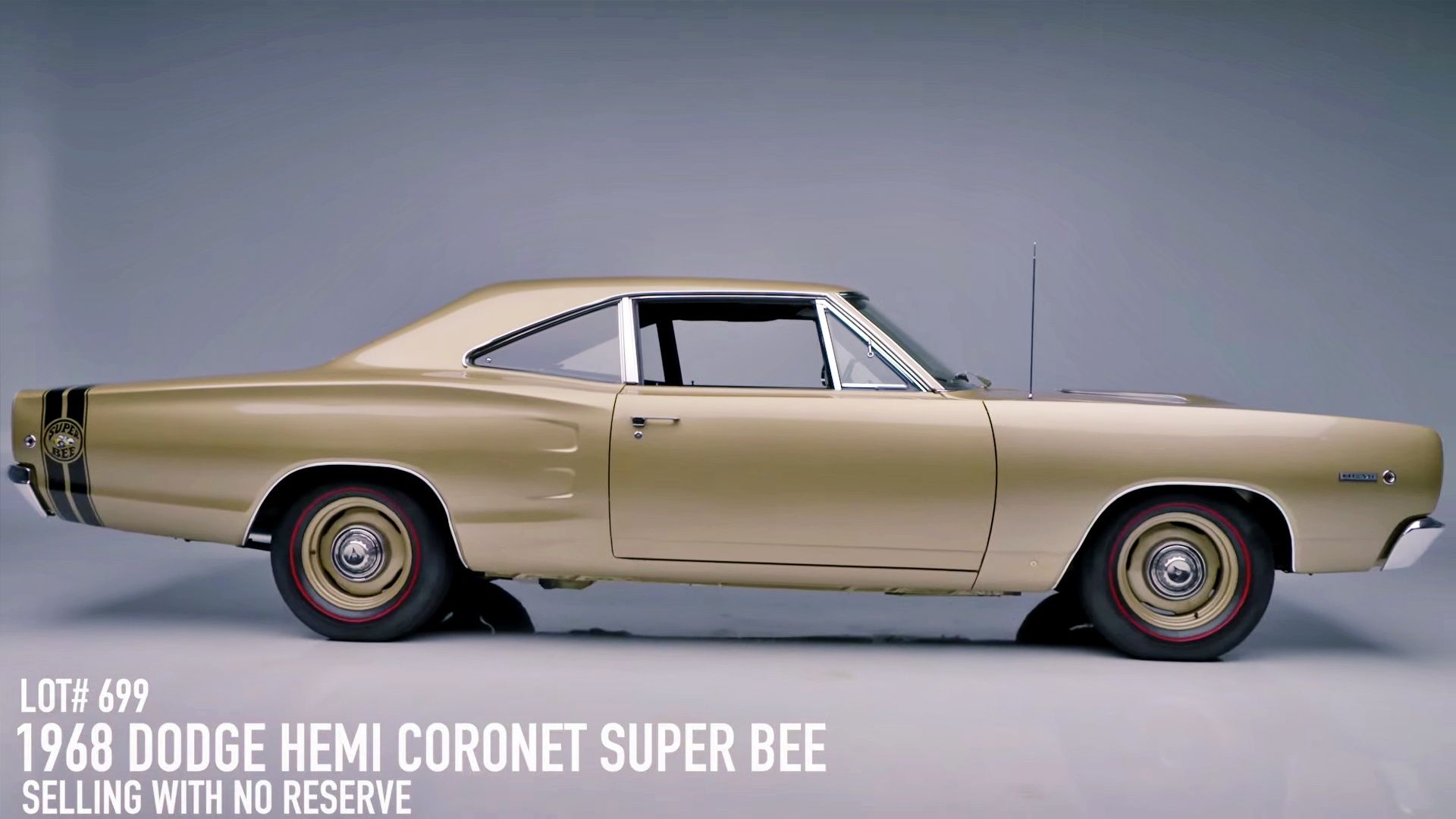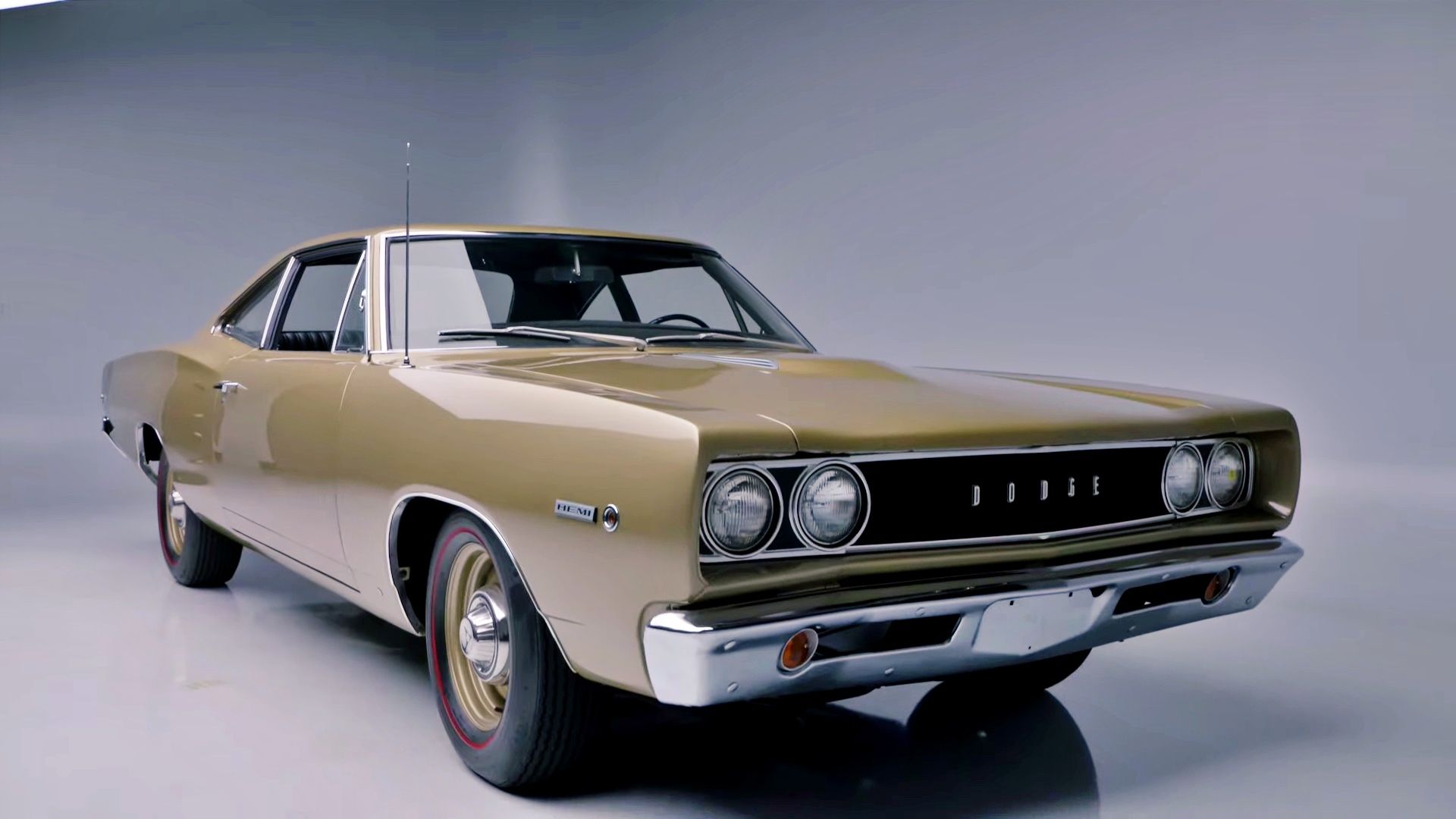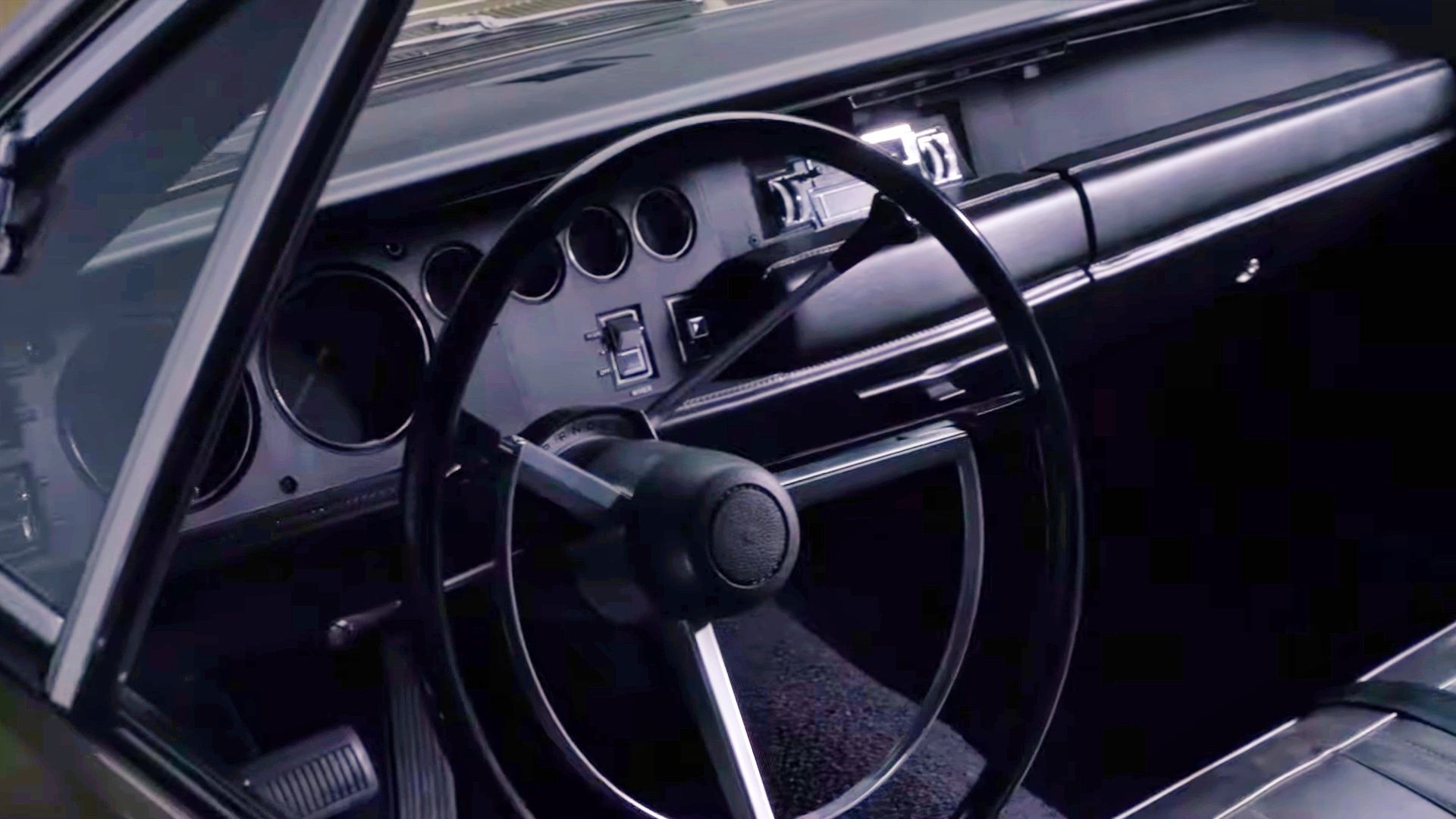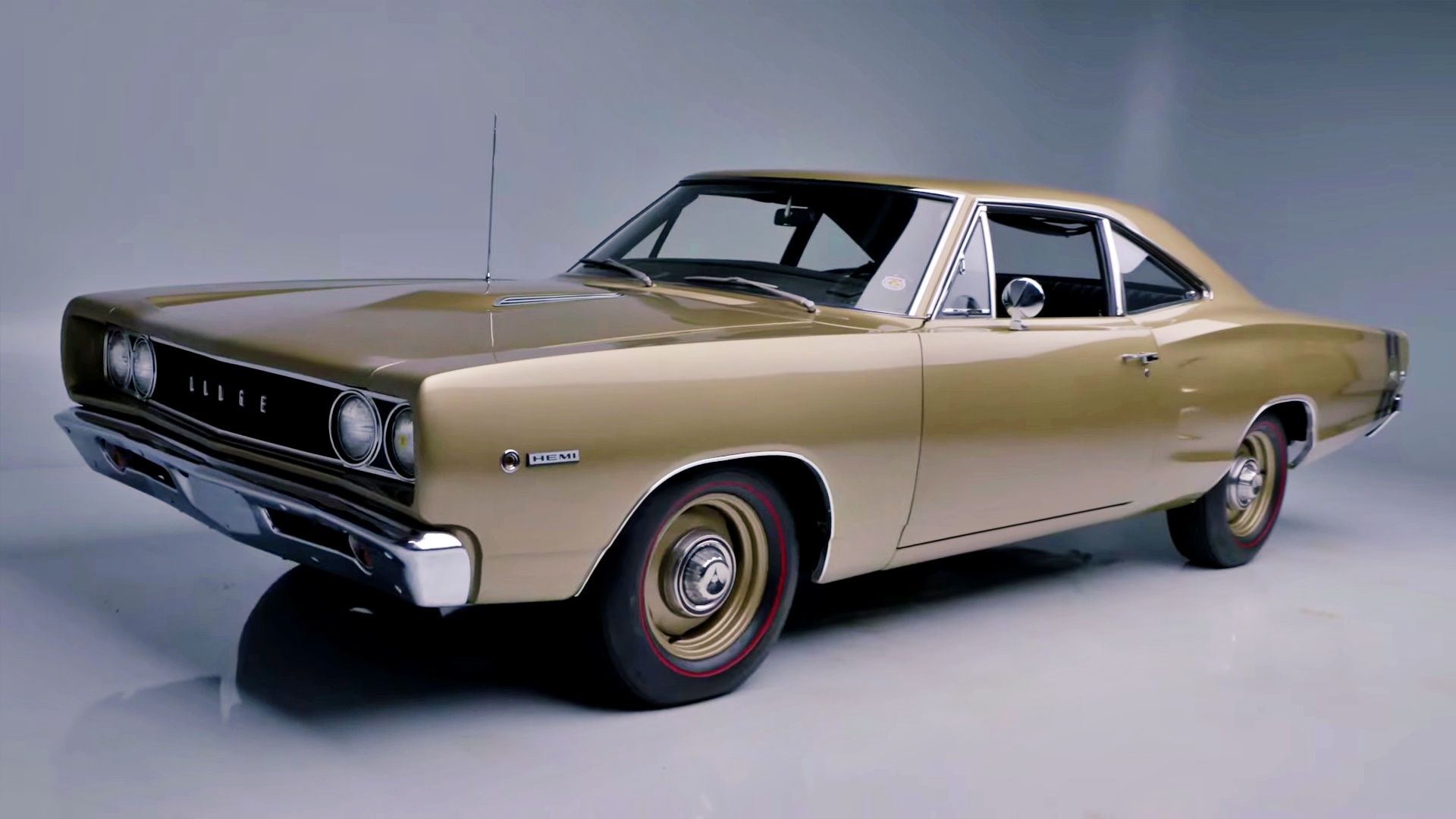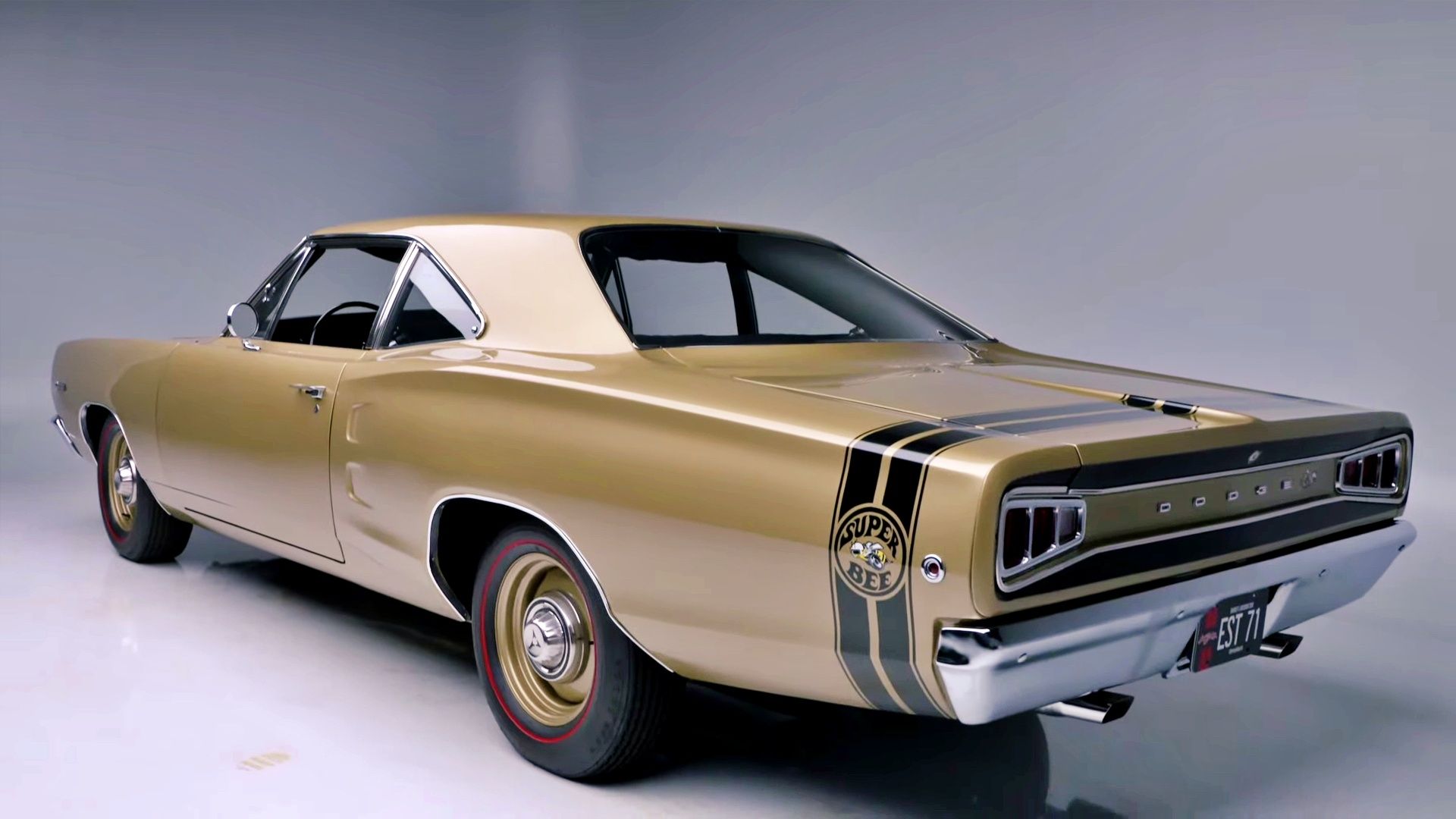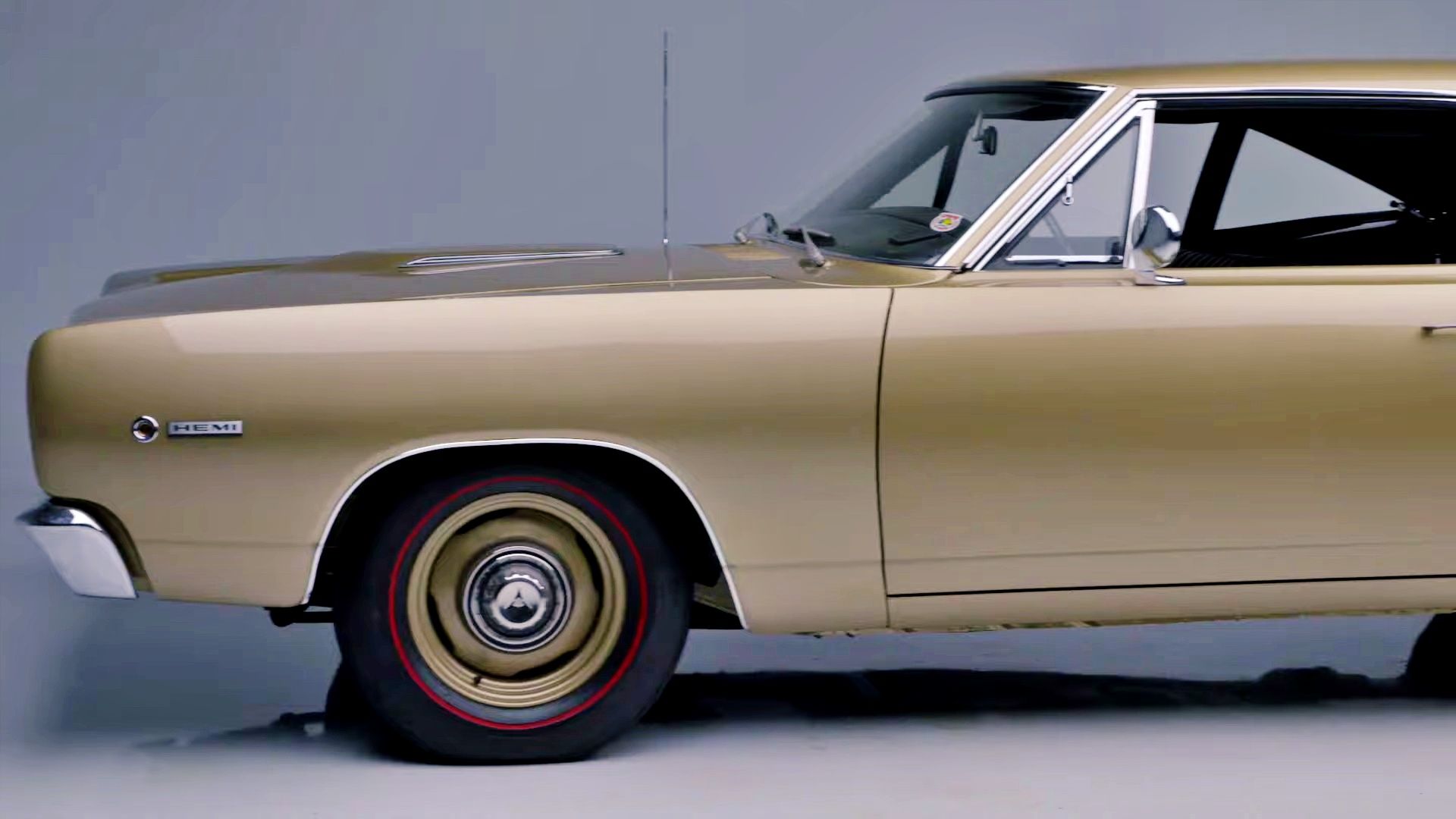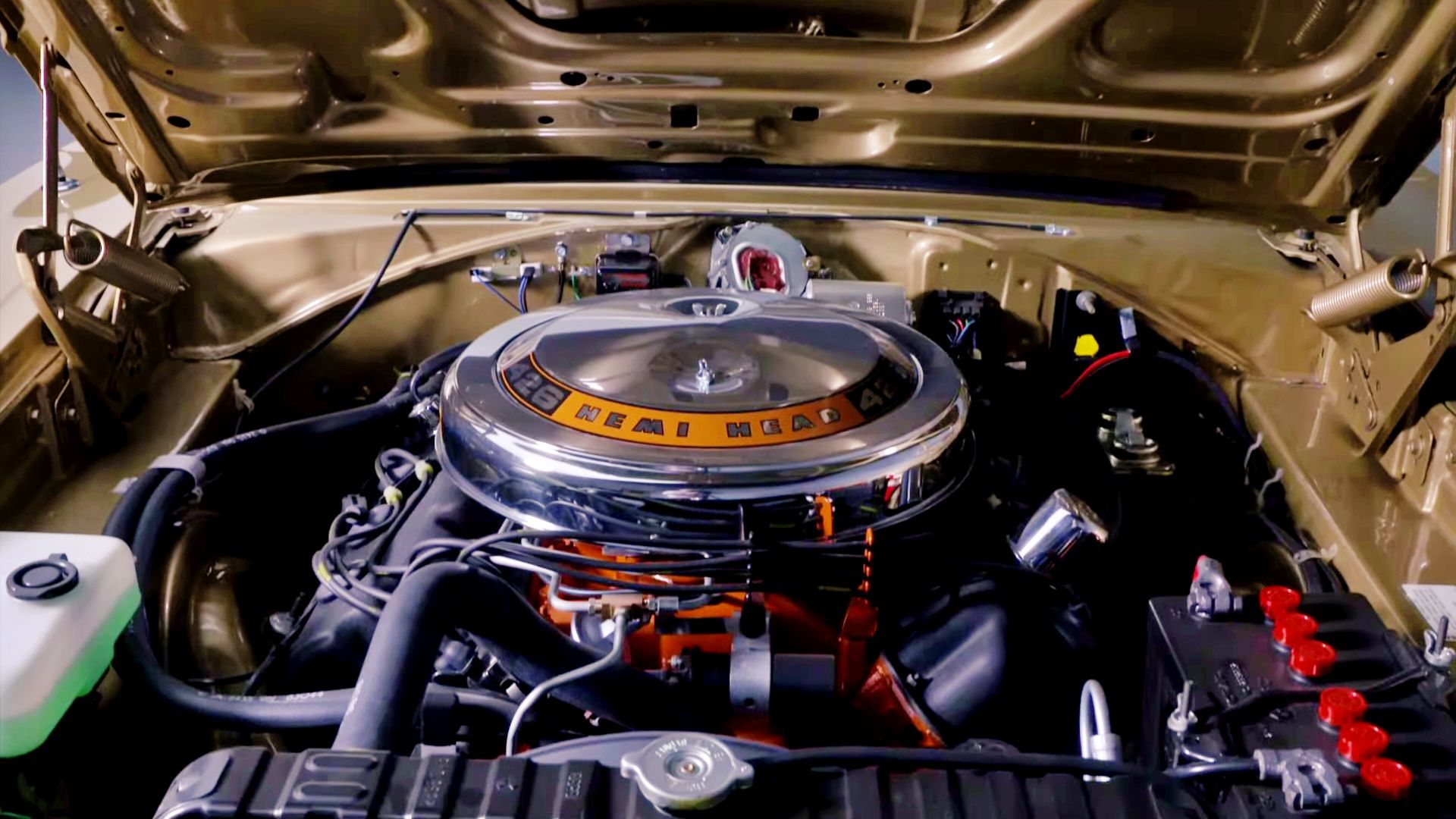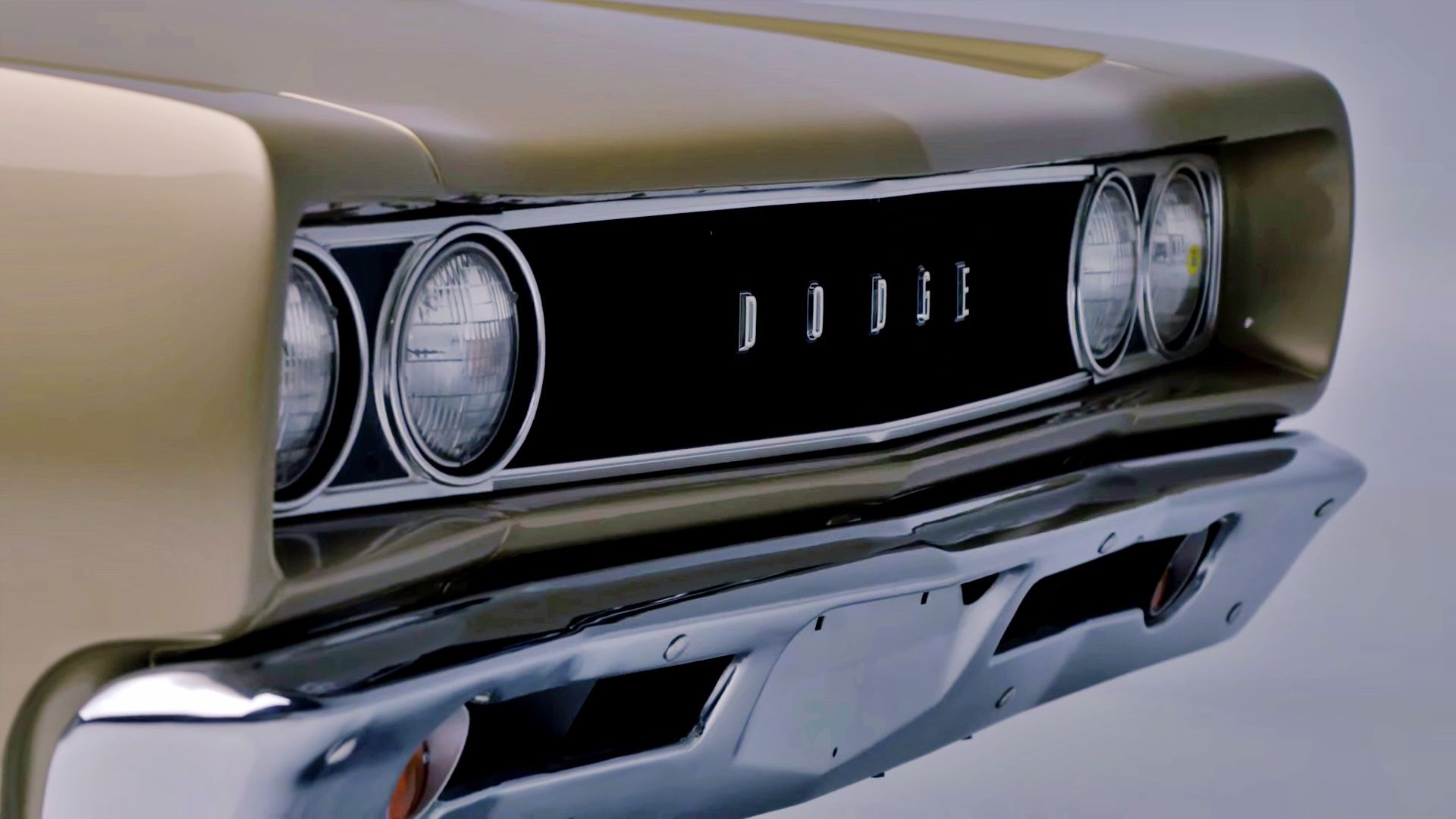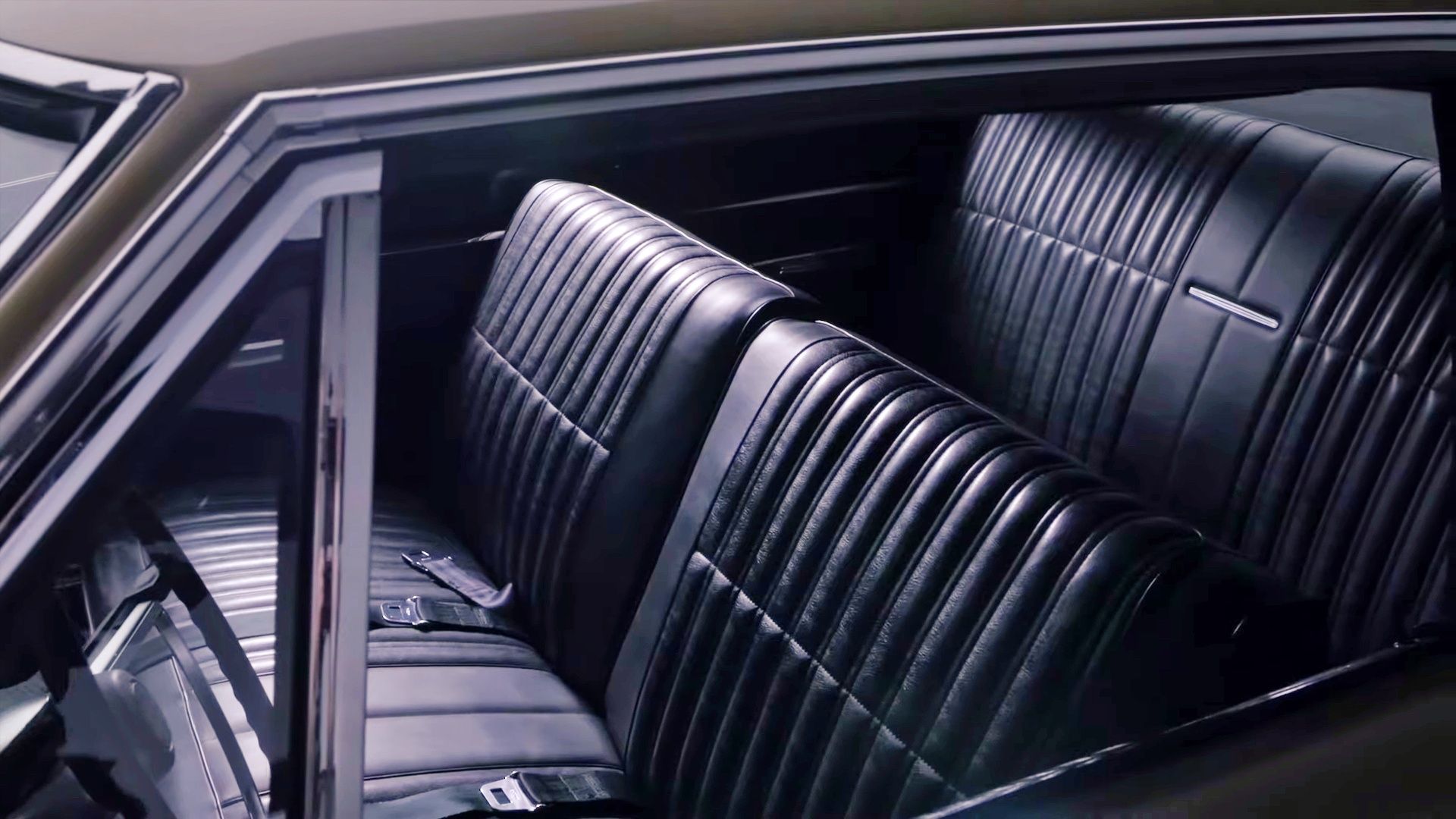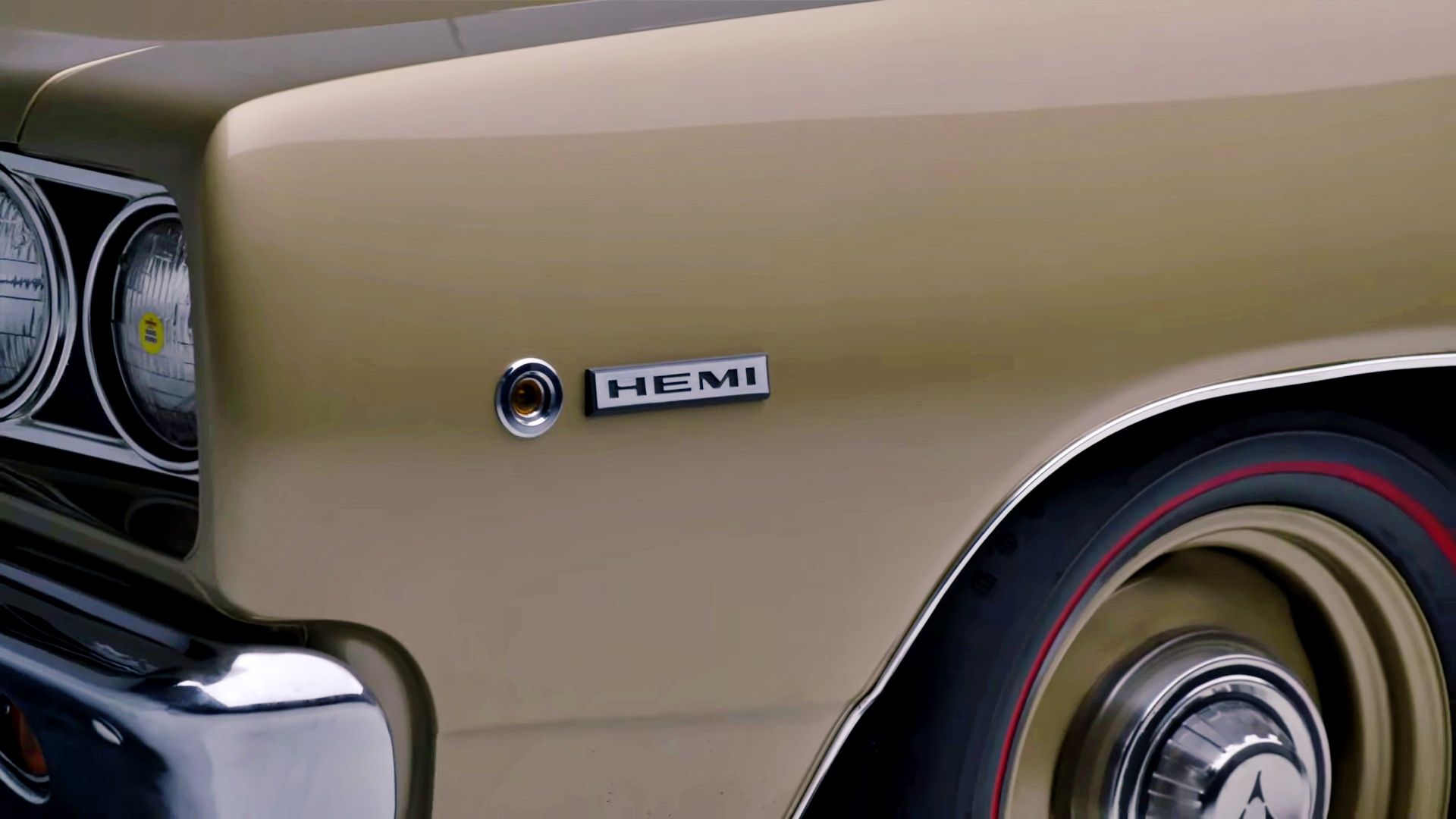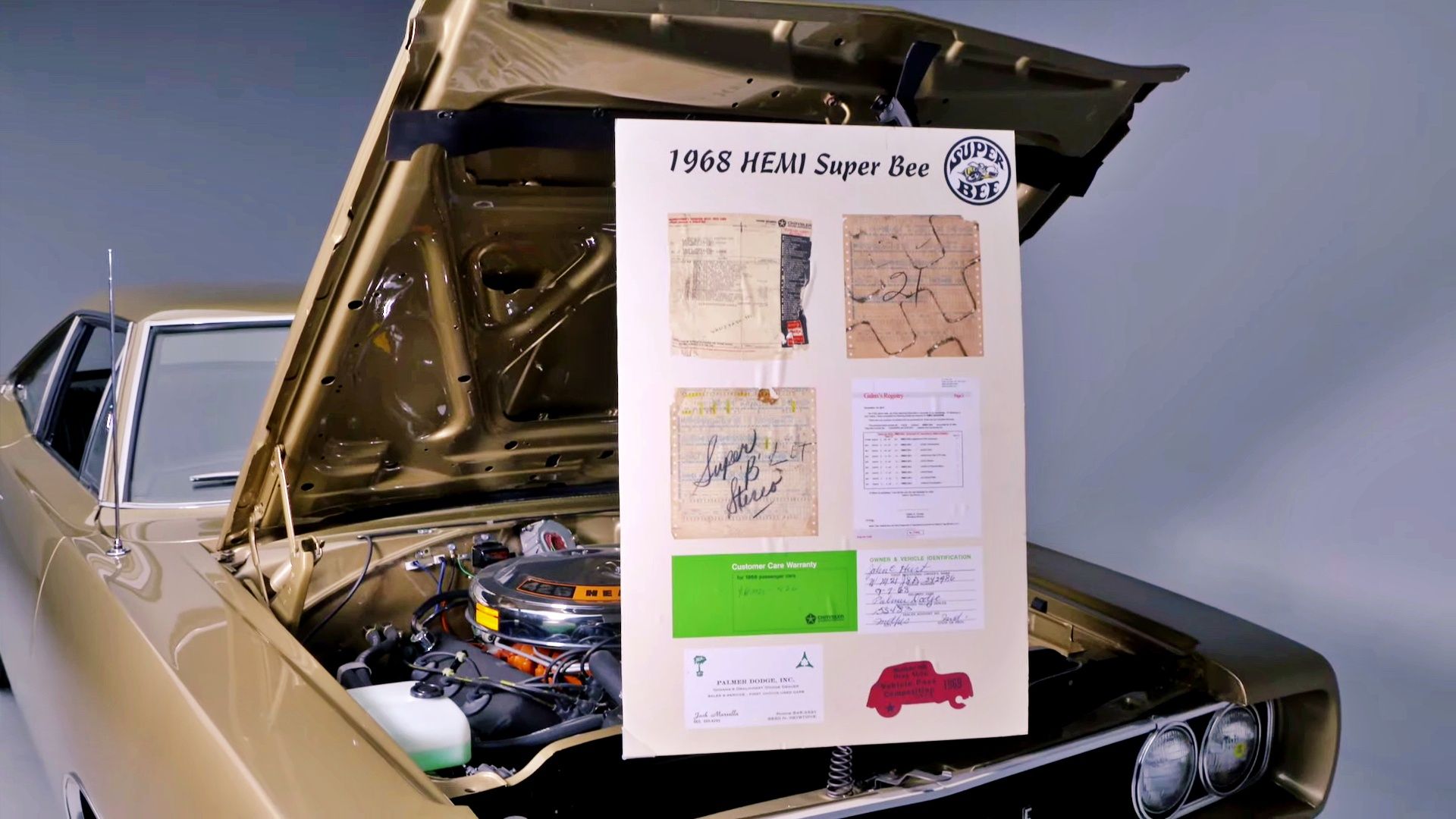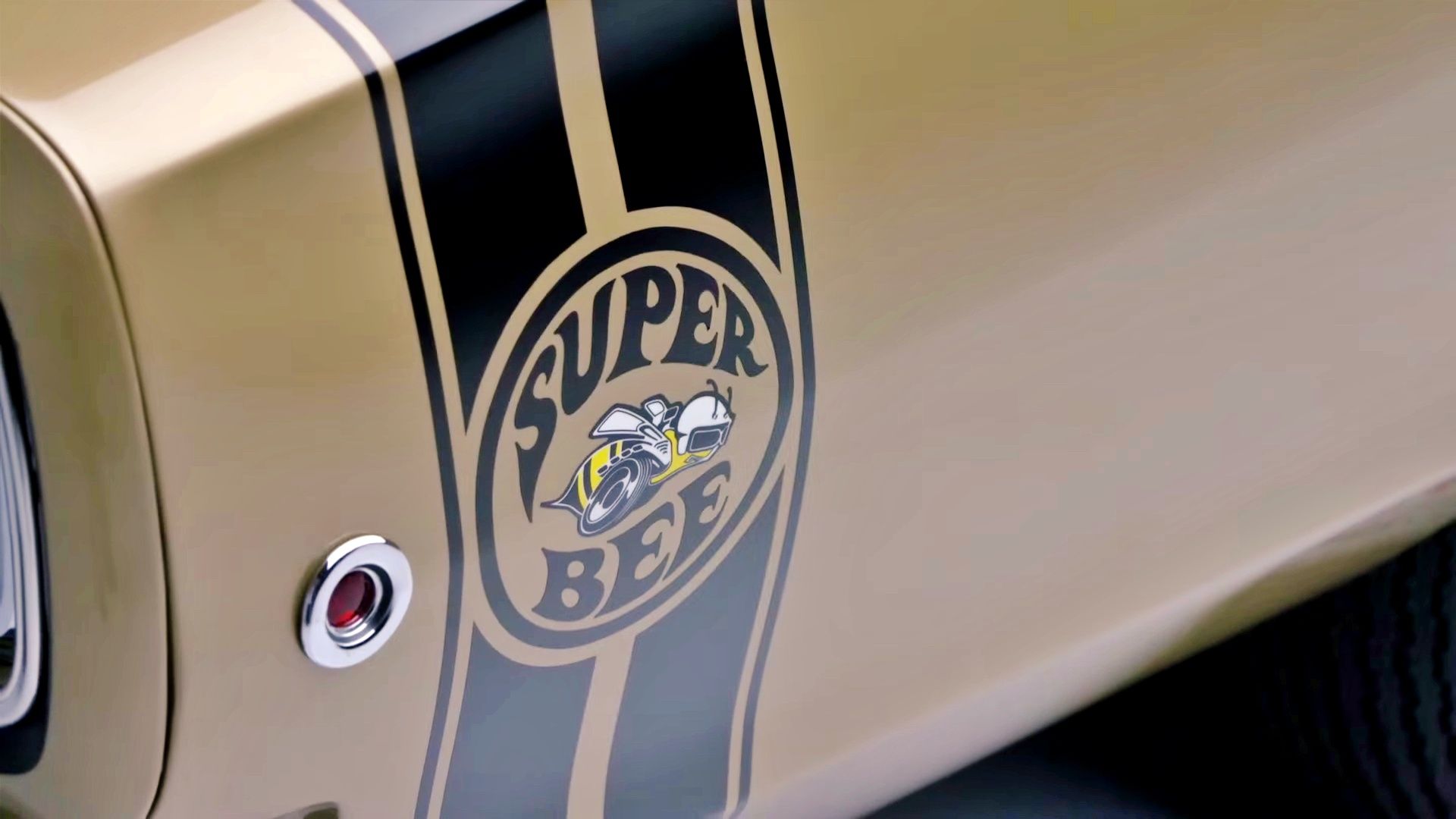A gold 1968 Dodge HEMI Coronet Super Bee has is all set to go under the hammer at Barrett Jackson's 2021 Houston Auction between September 16 and September 18 2021. Craig Jackson, CEO of Barrett Jackson, gives us a quick overview of this very special muscle car from the late 60s.
The Dodge Super Bee has to be one of the American automaker’s most illustrious muscle cars. In fact, it was Dodge's answer to the popularity of the Plymouth Road Runner. Though the Super Bee was only available as a pillared coupe in its first year, the pillar-less hardtop was available between 1969 and 1970. It featured the red hot 383 Magnum, nice tires, and suspension, all at a reasonable price.
The inclusion of a new Charger dash was a lovely touch. Mopar had the mechanicals with a rich selection of high-performance V-8 engines capped off by the massive HEMI, but even the slanted fastback 1966 and 1967 Charger failed to entice shoppers. It was time for a revolution.
Fortunately, the designers at Chrysler were hard at work, and by 1968, they came up with a lineup that they could actually take pride in and brag about.
The Charger ditched its fastback Coronet’s aesthetics to become a curvy icon that still resonates today. The Super Bee, sold as a stripped-down, occasional street racer, did an excellent job of transforming the two-door Coronet 440 coupe into something really exciting. However, its sales numbers never reached those of the Road Runner.
A pronounced hood, as well as two exhausts revealed the Super Bee beyond the insignia, decals, and stripes. It was the car that the serious driver desired, the person who preferred a stiffer, lighter car but yet wished to light up the quarter-mile sans breaking the bank. The Super Bee was marginally heavier when compared to the Road Runner, but much lighter than the Coronet R/T, thanks to a one-inch longer wheelbase and a few extra inches of overall length.}
This 1968 Dodge Super Bee seen here is powered by a 426ci HEMI V-8 engine with two Carter four-barrel carburetors. It is mated to a Torque Flite A727 HP 3-speed automatic, that sends power to Chrysler's 8.75-inch axle and 3.23:1 Sure-Grip differential.
It is one of only 93 HEMI automatics built and was purchased new from Palmer Dodge in Indianapolis, Indiana. During that time, this Super Bee was employed as a drag racer, predominantly at local tracks in the Indianapolis area. The car has a matching-numbers body and has received a full-service Concours-level rotisserie restoration.
The car was repainted white with blue stripes by the original owner. During the restoration, it was reverted to its original paint shade of JJ1 Medium Gold Metallic with black vinyl inside that is all original except for the carpet and headliner. The car also features power steering, an AM radio, an 8-track tape player, and bumper guards.
In the 1970s, the base HEMI engine was transported to a shop for repairs. The engine went missing while it was at the shop, only to be located in the early 1990s within a 5-mile radius about where it was first lost. As a consequence, the Super Bee was powered with a 383ci V8 in the interim.
The car also features a plethora of paperwork to back up its rich history. This Super Bee is in the MMC Detroit Global Vehicle Registry and comes with a Dave Wise Validation Report. The original dealer Window Sticker, factory OEM manufacturing Broadcast Sheet, owner's manual, build receipts, and restoration images are all included.
The Super Bee you see here is going for No Reserve at Barrett Jackson's inaugural auction in Houston, Texas, between September 16th and 18th.
Watch Craig Jackson, CEO at Barrett Jackson take us on a quick tour of the 1968 Dodge Super Bee, in the video below

